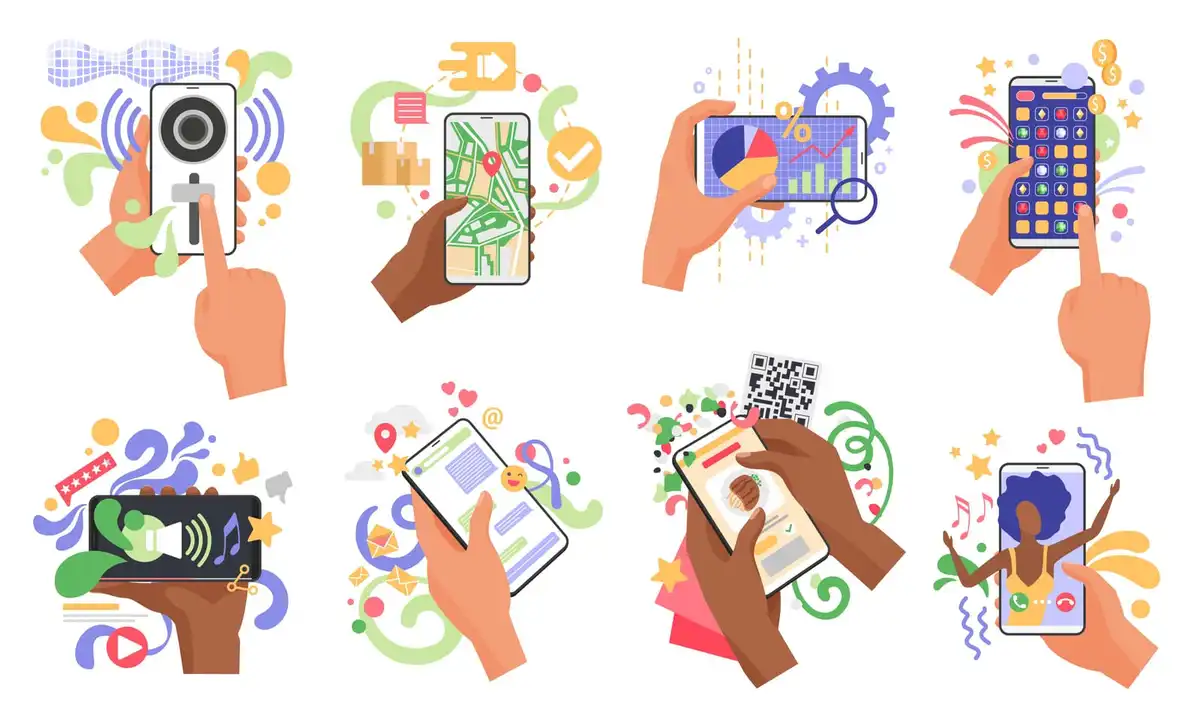Apps constantly compete for users’ attention, aiming to keep as many people engaged as possible. In terms of UX, user engagement and satisfaction are crucial. With short attention spans and high expectations, micro-interactions can be a game-changer when used effectively. These small, intuitive moments of interaction can captivate your audience, build brand loyalty, and boost engagement, setting your app apart from the competition.
In this article, we will discuss micro-interactions, exploring their significance, types, benefits, and best practices. We’ll also address frequently asked questions and provide valuable insights to help you harness the power of micro-interactions in your own designs.
Get ready to discover how these tiny design elements can make a BIG difference in user engagement, satisfaction, and overall product success.
What are Micro-Interactions?
Micro-interactions are subtle, event-driven animations or transitions that provide visual feedback to users, guiding them through their digital journey. They occur in response to specific user actions, such as clicking a button, hovering over an element, or completing a form.
Think of them as the digital equivalent of nonverbal cues in human communication. A nod, a smile, a raised eyebrow – these subtle gestures add depth and meaning to our interactions. Similarly, micro-interactions enrich the user experience by providing instant feedback, enhancing usability, and injecting a touch of personality into interfaces. For instance, you experience a micro-interaction when you press the like button on a YouTube video. It changes the number of likes by one and at the same time, it gives you a short animation in reaction to the click. It makes you feel good when pressing the like button.
Types of Micro-Interactions
Micro-interactions come in various forms, each serving a specific purpose:
- Hover Effects: These animations occur when a user hovers their cursor over an interactive element, providing visual cues about its functionality.
- Button Animations: Buttons can transform, change color, or provide subtle feedback upon being clicked, acknowledging the user’s action.
- Loading Animations: These animations keep users engaged while content loads, preventing frustration and conveying progress.
- Progress Bars: Visual representations of task completion, and progress bars keep users informed and motivated.
- Data Input Feedback: Micro-interactions can validate user input, highlighting errors or confirming successful entries.
- Notifications and Alerts: These animations draw attention to important updates or messages.
- Scroll-Triggered Animations: Elements can appear, fade, or move as the user scrolls, creating dynamic and engaging experiences.
Benefits of Micro-Interactions
While seemingly small, micro-interactions offer a range of significant benefits:
- Enhanced User Engagement: Micro-interactions make interfaces feel more responsive and alive, encouraging users to interact and explore.
- Improved Usability: By providing clear feedback and guidance, micro-interactions make interfaces more intuitive and user-friendly.
- Increased Satisfaction: Delightful micro-interactions create positive emotional responses, leaving users feeling satisfied and valued.
- Brand Differentiation: Well-crafted micro-interactions contribute to a unique brand identity and memorable user experiences.
Best Practices for Implementing Micro-Interactions
- Keep it Subtle: Micro-interactions should be subtle and unobtrusive, enhancing the experience without overwhelming the user.
- Focus on Functionality: Prioritize micro-interactions that provide clear feedback, guide users, and improve usability.
- Maintain Consistency: Use a consistent style and approach to micro-interactions throughout your design to create a cohesive experience.
- Test and Iterate: Gather user feedback and iterate on your micro-interactions to ensure they’re effective and enjoyable.
Impact of Micro-Interactions
- According to a study by Forrester, well-designed user experiences can increase conversion rates by up to 400%.
- Research by Nielsen Norman Group shows that users are more likely to forgive minor usability issues if they enjoy the overall experience.
Frequently Asked Questions about Micro-Interactions
- Aren’t micro-interactions just visual fluff? Absolutely not! Micro-interactions serve a crucial functional purpose by providing feedback, guiding users, and enhancing usability. They’re not just about aesthetics; they’re about creating meaningful and effective interactions.
- Won’t micro-interactions slow down my website or app? When implemented correctly, micro-interactions should be lightweight and optimized for performance. In fact, they can actually improve perceived performance by keeping users engaged during loading times or complex processes.
- How do I know which micro-interactions to use? The key is to focus on user needs and goals. Consider the context of each interaction and choose micro-interactions that provide relevant feedback, enhance clarity, and support the overall user flow.
- Can I add micro-interactions to an existing design? Yes! Micro-interactions can be incorporated into existing designs to enhance usability and engagement. Start by identifying key interaction points and opportunities for feedback or guidance.
- What tools can I use to create micro-interactions? There are a variety of tools available, ranging from code-based libraries like GSAP, Three.js, Anime.js, and Framer Motion to visual design tools like Adobe After Effects and Figma. Also, pure JavaScript or CSS can create great micro-interactions without the need for heavy libraries.
Conclusion
Micro-interactions are the unsung heroes of user experience design. These subtle animations and transitions play a vital role in guiding users, providing feedback, and creating delightful experiences. By incorporating well-crafted micro-interactions into your designs, you can significantly enhance user engagement, satisfaction, and overall product success.
Remember, it’s the little things that often make the biggest difference. So, don’t underestimate the power of micro-interactions – embrace them, experiment with them, and watch your designs come to life!


